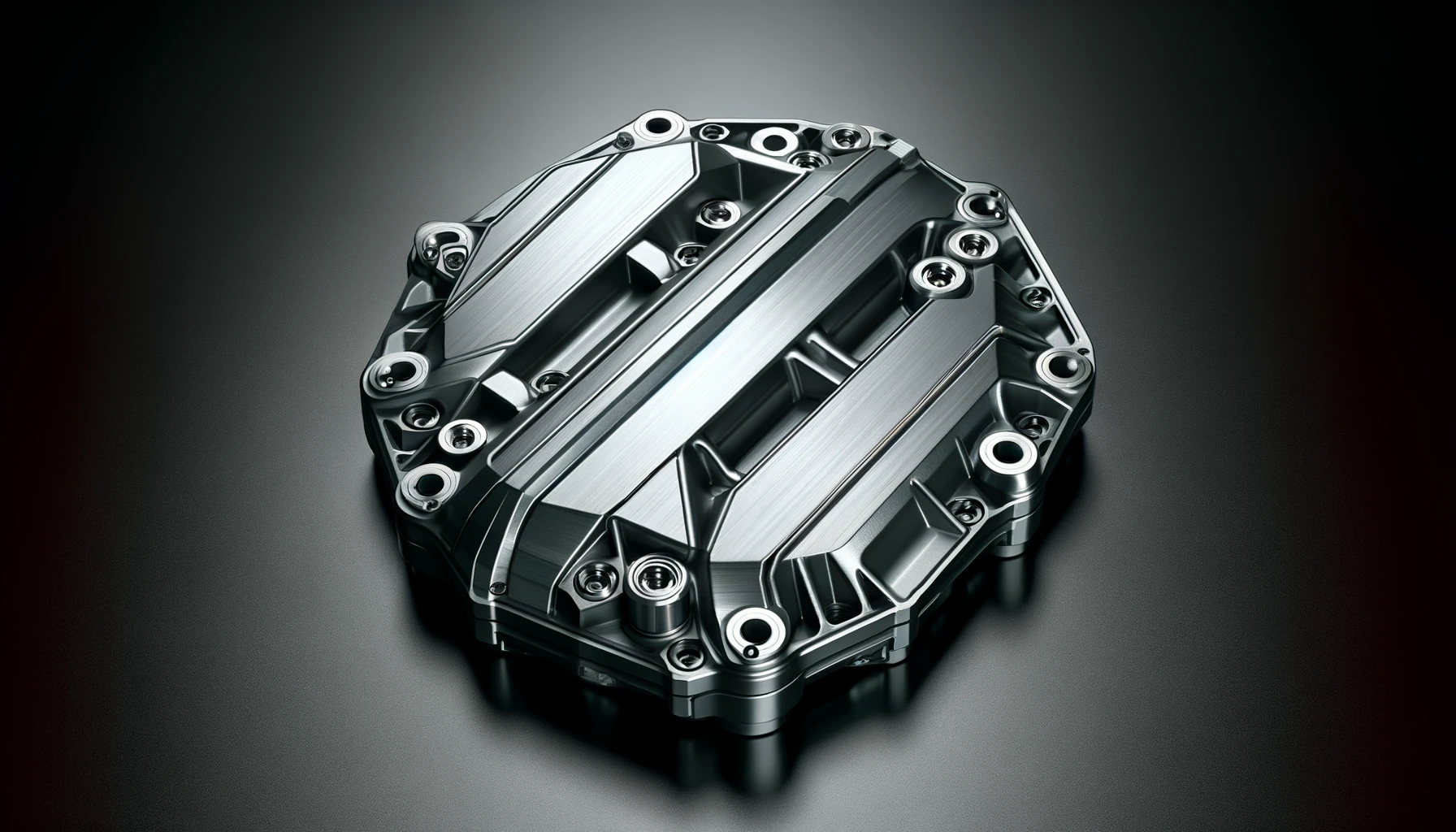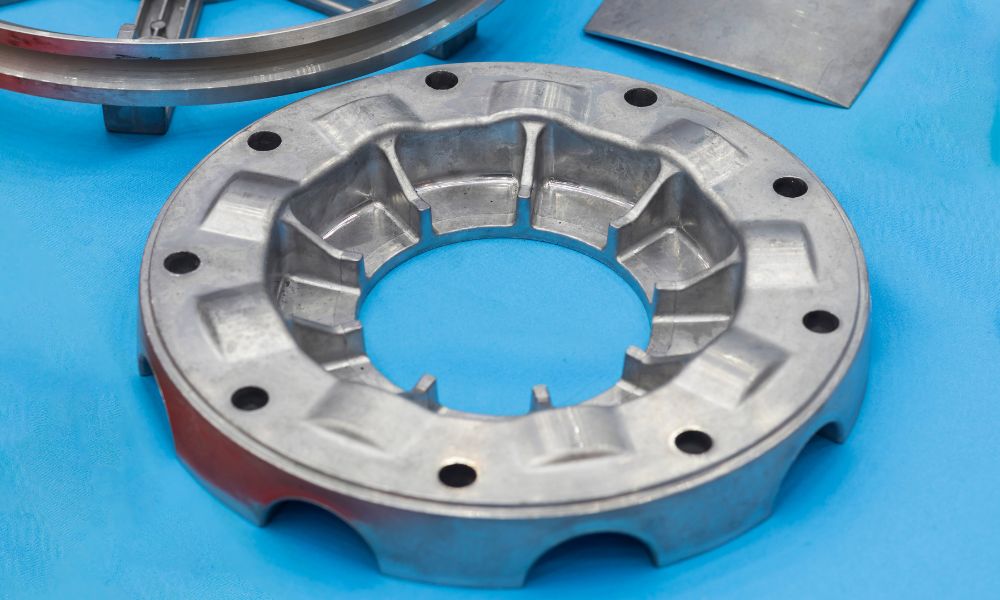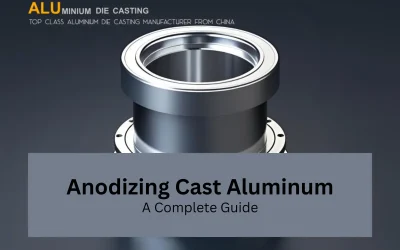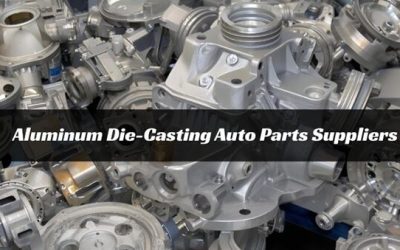An Ultimate Guide To Prototype Die Casting
In the plastic, and metalworking industry, die casting prototypes are considered to be financially expensive with a long lead time for part development projects. Nevertheless, the recent advances in the die casting prototyping industry have led to faster and more economical prototyping processes.
A main turning point is the appearance of Computer Numerical Control (CNC) machining, technological innovation that has completely changed the way we make tools for die casting. The required time for the conventional methods to complete a four-slide die was about 8 to 10 weeks, but now, CNC machining quickly does the same job in just 1 to 2 weeks.
Alongside this, the use of 3D design and simulation software is being integrated, which gives an opportunity to many people to create die casting tooling. The use of 3D Computer-Aided Design (CAD) technology has made tooling design easier to be compiled in just a few hours. In addition, advanced software allows 3d or 3d virtual prototyping, which in turn helps to identify design flaws that might otherwise be a problem during production.
The different kinds of prototyp die casting methods include a single-cavity die, gravity casting, rapid prototyping, plaster mold prototyping, and machining. The emergence of 3D printing technology has remarkably expanded the scope of prototyping. Also, it introduces a new array of methodologies that are yet to be explored. In short, the development of die casting prototypes represents an archetype for manufacturing efficiency. The decrease in entry barriers to die casting prototyping has been attributed to the advent of CNC machining and 3D design software.
The synergy of technological superiority not only increases cost effectiveness but also shortens the time of product development, which is seen as one of the transformational features of modern manufacturing methods. This article provides useful information about prototype diecasting.
How prototype die casting revolutionize the Manufacturing Industry?
Prototype die casting is a fundamental part of modern manufacturing technology. It provides incomparable speed and accuracy in the fabrication of complex metal parts. This technique is widely used in many industries such as aircraft and consumer electronics by the ability to reproduce intricate shapes with high accuracy.
Prototype die casting is definitely versatile in the way it can utilize any material from sturdy plastics to high strength metals, which is especially formulated to meet different performance requirements. The aluminum die casting prototyping is highly valued for its lightweight and strong qualities, therefore it is widely used in car and aircraft manufacturing. Zinc.
In addition, offers highly dimensionally stable and not prone to corrosion, and relatively considered an important element in the manufacturing of inexpensive and complicated design components for consumer electronics and telecommunication applications. Magnesium, another alloy , known for its superior strength-to-weight ratio, is often used for lightweight structures in automotive and aerospace industries.
Adoption of die casting for prototyping is backed up with various benefits. Firstly, die casting allows economies of scale, thus producing sophisticated parts in large volumes at low unit costs. This cost effectiveness is further augmented by the smooth die casting process, which allows for a rapid production cycle, which is a critical factor for meeting tight schedules and quicker time-to-market.
Different Strategies For Die Casting Prototype Manufacturing:
The die casting prototyping strategy, the most suitable one, is determined by many factors: from the price and lead time to the possibility to test the critical product features. Among the plethora of options available, two prominent strategies stand out: the single cavity prototype die and the gravity casting methods. Let’s take a look at each technique and assess their positive and negative sides.
Single-Cavity Prototype Die casting:
If there is stringent testing and evaluation of critical product features, the single-cavity prototype die would be the most suitable. The production of this method is complete, with the factors like surface finish being carefully examined, a feature that is of great importance in many applications. In addition, it offers the flexibility of making different design modifications which helps to avoid the risk of costly rework in the next production phases.
The single-cavity prototype die casting process has one significant advantage in the form of potential reuse of the original die’s insert in the final stage of production. It also enables to reduce the time from prototyping to production and save money for tooling development. As well, the shorter lead time for creating final dies and secondary trim tools results in a higher level of efficiency in the production process, which is very important in manufacturing industries that are characterized by a high level of competition.
Nevertheless, the single-cavity prototype die process has its own merits, but it may also raise challenges in the situations where time constraints or design uncertainties are the main factors. The capital expenditure and delivery time required for die design and creation demand proper planning and assessment of the project specifications to ensure the best outcomes.
Gravity Casting:
However, gravity casting, which is an inexpensive option, is favored when it comes to small-scale production runs. Gravity casting is highly acclaimed for its cost-effectiveness and fast lead times in contrast to single-cavity prototyping. As a result, gravity casting dominates the field of die casting prototyping.
The gravity casting has another side of the coin, and although it has the benefit of a higher fatigue strength due to less porosity. Aside from this, it also has its own disadvantages. The need for extra machining operations resulting in the partial loss of the initial cost advantage is eminent for the die casting process which is very accurate. Moreover, the lack of reproducing the ultra-thin wall thickness as in die casting may limit the usage of the 3D printing technology for some applications.
Stereolithography and Die Casting:
There are various techniques for die casting rapid prototyping including stereolithography, laser sintering, and fused deposition modeling stereolithography, laser sintering, and fused deposition modeling. Combining stereolithography techniques, these methods offer a quick turnaround time, which is usually about 5 to 8 weeks. Unlike that of the gravity-fed die casting, these prototype techniques employ high pressure diecasting, while H-13 steel dies are used to reproduce the intricate part geometries to the highest level of precision.
A major advantage of rapid prototyping aluminum is that it is quite close to the properties and materials of production-grade materials. Alloying materials with similar physical and thermal properties as those used in full-scale production helps in the creation of prototypes with thorough and precise product analysis that doesn’t require costly die construction. This is one of the reasons why this technology is specifically suited for the production of small batches of tens of thousands of units, while tooling is being made.
Nevertheless, it is necessary to mention that die casting rapid prototyping, commonly known as the “steel process,” may not be functional for parts with the thin or tall standing detail because of the natural constraints of the process.
Plaster Mold Prototyping:
In addition, it can be referred to as the rubber plastic mold casting (RPM) that utilizes the gravity-based casting method which is suitable for a variety of alloys including aluminum, magnesium, zinc and ZA alloys. Stereolithography models are the best way to achieve fast prototype production within a few weeks which is a very crucial factor in the quick iteration and modification of part geometry.
Plaster mold prototyping is often cost-effective, and the cost of making a plaster mold is usually just a fraction of the investment needed for the production die construction. While the costs of plaster mold prototyping are estimated at approximately 10% of the expenses of traditional tooling, it is shown to be a cost-effective solution for die casting prototyping.
Plaster mold prototyping has a quite wide range, but it is especially good for geometries from 2 to 24 cubic inches. This method is used to get working diecast prototypes of 10s to 100s pieces, and it is most suitable for projects because it does not need the high cost of hard die casting tooling.
While this is an advantage of plaster mold prototyping, designers should be careful not to overcomplicate the part geometries as the ability to reproduce any castable geometry may lead to increased die casting costs and manufacturing challenges.
Using Machining from a Similar Die Casting in the Prototyping Process
Prototypes from same die castings can be done in a pragmatic way, with the use of the existing die castings which are similar in size and shape. This method is the most practical and can be used for molds with complex shapes. Also, it is more feasible for small parts where the machining of the thick areas of a single large die casting is not advisable. It is the best choice for the production of small gears, screw-machined products, and other parts, which are machined automatically in the process and the materials.
On other hand, die casting is undeniably convenient in prototyping; on the other hand, it is not without its own limitations. First, the design parameters of the prototype are inherently limited by the size and form of available die castings. Machining from a casting means that we will have to do away with the hard skin that is characteristic of production die castings.
Studies that focus on the consequences of skin removal on the mechanical properties of die castings are conducted. For example, Briggs & Stratton’s studies revealed that a 10% and 39% reduction in yield and fatigue strengths, respectively, occurred when the skin was machined off from the aluminium die castings. In a similar way, the findings from the U. S. National Energy Technology Laboratory showed that zinc die castings had yield strength about 10% lower when skin was removed.
Machining Techniques in Wrought or Sheet Materials
In the context of die casting prototyping, machining from either wrought or sheet materials becomes an alternative approach for building prototypes from sheet or extruded aluminum and magnesium. Cast wrought and sheet products are more ductile than die castings, but they have lower compressive yield strength, and could be directional because of the orientation of the sheet or extruded alloys.
In addition to the inherent limitations of machining from wrought or sheet materials, there are some advantages which are significant in specific cases, such as when material properties or directional features are required. Through a delicate analysis of the trade-offs that include ductility, compressive yield strength, and directional properties, manufacturers can use machining from wrought or sheet materials to create prototypes that meet their exacting needs.
Compatible Materials For Prototypes Die-Casting
Die casting prototype is based on the variety of materials that are chosen carefully to fulfill the specific requirements on the performance level and application. This paragraph examines the most commonly used die casting materials, identifies their distinctive properties, and shows how they can be applied in different industries.
1.Aluminum:
Aluminum remains as the most popular material used in prototype die casting, due to its superior strength, lightweight characteristic and resistance to corrosion. This material is the most versatile one and is used across industries like automotive, aerospace, consumer electronics, and telecommunications. The aluminum die cast prototypes possess great dimensional stability and a good surface finish, which account for their use in the production of detailed parts and structural elements.
2.Zinc:
Zinc is also a common choice for casting prototypes that are known for their high dimensional accuracy, great strength and excellent corrosion resistance. Zinc die cast parts are well suited for applications of complex geometries and high degree of precision and are used in automotive, electronic, medical devices and hardware industries. Moreover, zinc’s low melting point makes it easy to run fast production cycles, which in turn, reduce the overall cost of prototyping.
3.Magnesium:
Magnesium is a material that has an unrivaled combination of strength-to-weight ratio, making it a desirable choice for lightweight structural components in automotive, aerospace, and consumer electronics industries. The magnesium die cast parts are characterized by superb mechanical properties which include high stiffness and impact resistance and also thermal conductivity that is exceptional. Although it is more expensive than aluminum and zinc, magnesium’s exclusive features make it favored for prototyping applications in which weight reduction and performance optimization are the main goals.
4. Brass and Copper:
Brass and copper alloys are employed for niche applications in prototype die casting, especially in the industries that demand better electrical and thermal conductivity. This type of metal is highly valued for its good corrosion resistance, machinability, and aesthetic properties. Such parts are used in electrical connectors, plumbing fixtures, decorative hardware, and precision instruments.
How To Determine The Right Prototype DieCasting Technique?
The selection of the right die cast prototyping process involves comprehending the basic differences between the production die casting methods and the methods of these components usually used in prototype production. It is essential to acknowledge that the prototypes developed through diecasting have different features from the production counterparts due to the variations in the alloy composition and the manufacturing method.
For instance, the diecast components are mostly covered with a layer of skin of about 0. For instance, 5 mm thick, which is a major factor that determines the product’s tensile strength and fatigue life. However, this skin leads to a problem in prototype machining, where one may have to remove part of it or the whole skin to produce the prototype.
Although the mechanical properties of the castings may be different from those of prototypes produced using the other methods, it is still the best option to use die casting in the production process. The physical characteristics of die casting, such as the fast cooling, quick solidification, and high-pressure molding, are the factors that set the diecast prototypes apart from the other types of prototypes.
The alloys that are produced from diecasting are designed to suit specific casting methods but they may not be suitable for gravity casting or machining of wrought or sheet material. For example, the Zamak alloy group widely used in diecasting is comprised of Zamak 3, 5, and 7, each of which contains 4% aluminum and has its own solidification rates and mechanical properties. As a result, Zamak alloys are not recommended for prototyping gravity casting, since the mechanical properties of the gravity casting prototypes may differ from those of diecast. Instead, the ZA alloys are suggested for gravity casting prototyping to mimic die casting mechanical properties as closely as possible.
It needs to be mentioned that Zamak 3, 5 and 7 are not suitable for casting prototypes, however they can be used for the decorative elements of the prototype, provided their mechanical properties do not affect the functionality of the prototype.
Conclusion
What differentiates production techniques from prototyping methods should be understood in selecting the best die casting prototype. Though there are variations, diecasting is the main reason for mechanical properties of prototypes, and the correct choice of alloy is essential for their compatibility with other die casting prototyping processes. By using these insights, product manufacturers can reduce the time needed to fabricate prototypes to production, thus launching quality products with confidence.





0 Comments